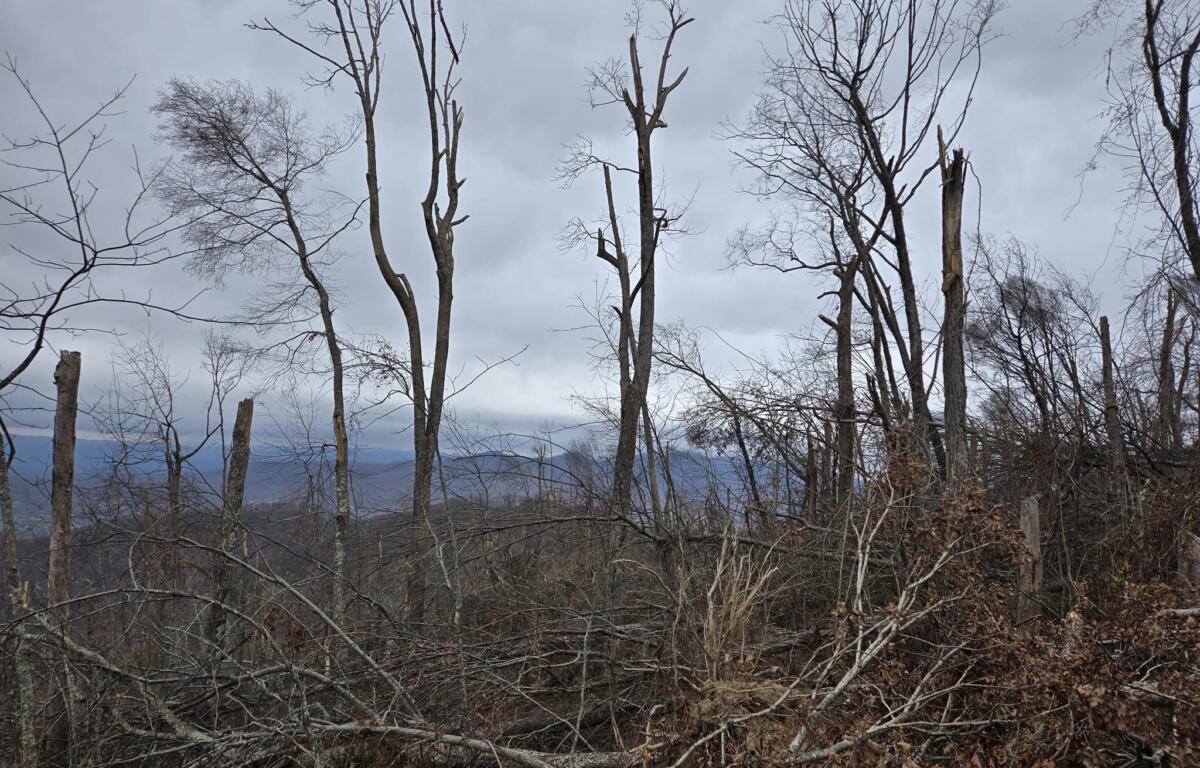ASHEVILLE, N.C. (828newsNOW) — The North Carolina Forest Service has released a report on the damage Tropical Storm Helene caused to area woodlands, and the numbers are staggering.
The forest service estimated 822,000 acres of timberland received some level of damage during the storm resulting in an estimated $214 million of timber damage on all North Carolina forest lands.
Buncombe County was among the most heavily impacted areas, the report released Oct. 22 said. According to the report, more than 89,400 acres of timber (public and private) were damaged to the tune of more than $19 million.
Damage distribution between land ownership was estimated to be:
- 21% public (U.S. Forest Service and other public ownerships)
- 78% private (private individuals, corporations, and other ownerships)
- 1% reserved lands (reserved areas such as parklands)
Of the 333 points examined during the aerial survey, 56 points contained at least some damage (windthrown trees or ones that had tops removed by the storm). Some timber damage was also attributed to landslides and flooding. The timber damage overall was not consistent over the area of concern with some areas having severe damage across the landscape and others experiencing somewhat light damage overall, the report said.
“It was not uncommon to see areas with severe damage with adjacent areas experiencing relatively light damage. It should be noted that slopes facing in a southerly direction received the force of the wind and therefore experienced a larger proportion of the damage overall,” the report said. “In some areas, the leaves were blown off the trees or damage was observed on the windward slopes while the leeward slopes received lighter effects, often retaining their leaves and appearing untouched by the effects of the wind.”
The report estimated that more than 27 percent of the forestland in the affected counties received some level of damage. Because of the timber types prevalent in this area, a substantial proportion of the damage appears to be hardwood saw timber. Softwood timber was not damaged in the same proportion as the hardwood types, the report said.
The heaviest damage was confined to a six-county area with Buncombe and McDowell counties being at the center. Other counties affected were: Alleghany, Ashe, Avery, Burke, Caldwell, Haywood, Henderson, Lincoln, Madison, Mitchell, Polk, Rutherford, Swain, Transylvania, Watauga and Yancey.
The most heavily impacted counties were Avery, Buncombe, McDowell, Mitchell, Henderson and Yancey, the report said. This was based on the percentage of points within the county showing damage.
During the assessment, aerial surveyors made general observations including:
- Damage was not consistent overall
- Windward (southerly slopes) received a larger share of the damage.
- Apparent microburst or downburst areas were evident throughout the area.
- Areas of heavy damage were interspersed throughout areas with much lighter damage.
- Hardwood stands were affected to a larger extent than conifer stands
- Most damage was blowdown with top/stem breakage being lighter
- Mudslides and flooding were a small proportion of the overall timber damage.
- Single, scattered tree damage is difficult to quantify from the air.
“While we have seen some other damaging wind events affecting our timber resource in recent decades, this may be the most damaging wind event we have seen in North Carolina since Hurricane Fran in 1996 (Eastern North Carolina) and Hurricane Hugo in 1989 (Western North Carolina),” the report said. “Ground observations by personnel within the damaged areas and pictures coming out of these areas reinforce the observations made.”


